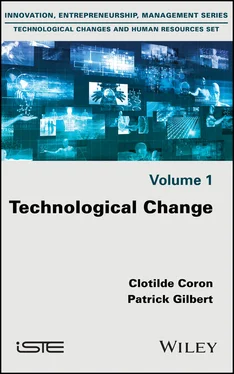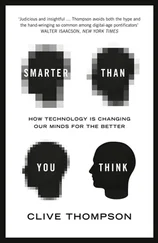1 Cover
2 Introduction Introduction For a long time, technological change was considered synonymous with economic and social progress. Today, it stimulates some and worries others. To take just one example, the most emblematic, the massive arrival of new digital tools is disrupting consumption patterns, forms of employment and working conditions, and posing many challenges for organizations and individuals alike. While it is recognized that technological change is a key determinant of economic growth, it is also true that it can also amplify or even catalyze inequalities (by age, gender, level of education and skills, income, etc.). In short, technological change is also a social change with which it maintains complex interactions: technology is as much the source, ambivalent, as the consequence of social transformations. In particular, individuals are both human resources of technological transformations and receivers, more or less capable and accepting of its effects.
3 1 The Human and Social Sciences in the Face of Technological Change
1.1. Approaches to technological change
1.2. A brief history of technological change
4 2 Technological Change and Society
2.1. Powers, institutions and technological change
2.2. Ethics in the face of technology
2.3. Technological change and diversity
2.4. Technological change and ecology
5 3 Technological Change and Organization
3.1. Omnipresence of the technical object in work activities
3.2. The interaction of technological and organizational systems
3.3. Technology as a liberator and control agent
3.4. Technological change as a social process
6 4 Technological Change and the Individual
4.1. Activity and technical object
4.2. The encounter between the individual and the technical object
4.3. Beyond the content of activities, a transformation of working structures
4.4. Technological changes and individual skills
7 5 Experiencing Technological Change
5.1. Threats and opportunities associated with technological change in organizations
5.2. Reconciling technical and social issues
5.3. Managing responsible technological change
8 References
9 Index
10 End User License Agreement
1 Introduction Table I.1. Contributions of the humanities and social sciences Table I.1. Contributions of the humanities and social sciences Discipline Consideration Subject of study History Technologies and their development Genealogy of the appearance and dissemination of technical achievements Philosophy The meaning of technologies for humanity Nature of the technology Value of technology for humanity Anthropology The uses and roles of technical objects Material culture Technical innovation and societal transformations Sociology Social groups, technology and their interactions Technical power, technical democracy Perceptions and social influences of technology Mediation and communication methods Economic sciences Production, trade and consumption of goods and services Relationship between technology and economics Effects of technological progress on employment Psychology Individual and collective conduct at work in a technical environment Attitudes, learning, satisfaction, adaptation, acceptance of new technical objects Productive activity and technical mediations Apart from the disciplinary contributions mentioned above, there are object-oriented sciences that involve several source disciplines, such as information and communication sciences, the purpose of which is the study of communication and for which communication is rather an object of interdisciplinary knowledge. The management sciences, which aim at the instrumental regulation of organized collective activities, have made some contributions, albeit still limited, to the question of technology. It is precisely to the task of reducing this gap that this book would like to contribute.
2 Chapter 1 Table 1.1. Means of supporting activities via information technology (source: ad...
Table 1.2. Ten profound changes in the Fourth Industrial Revolution (source: exc...
3 Chapter 2Table 2.1. Change in the percentage of households with Internet access in the to...Table 2.2. Research on the relationship between technostress and demographic cha...
4 Chapter 3Table 3.1. How digital technologies have changed the HR processes (non-exhaustiv...
5 Chapter 4Table 4.1. Some contributions of digital technology to the system of activityTable 4.2. ICTs for skills development (source: Eurydice, 2012)
6 Chapter 5Table 5.1. Overview and characterization of threats and opportunities associated...Table 5.2. Transposition of threats to work organizationsTable 5.3. The technical and social dimensions of social innovationTable 5.4. Responsible technological innovation, a response to the threats and r...Table 5.5. The structuring dimensions of change and associated strategiesTable 5.6. The specificities of technological change
1 Introduction Figure I.1. From technology to object Figure I.1. From technology to object These clarifications are proposed as conventions that we would like to share with the readers of this book. They will lead us, for example, to consider digital technology as the grouping of a set of technologies covering fields of application as diverse as medicine (video-endoscopy), prototype production (additive manufacturing or 3D printing), architecture (Building Information Models, or geometric representations of a building in 3D), and graphic creation (digital comic strips). Each of these technologies in turn brings together several objects. Thus, additive manufacturing is based on printers, producing objects as varied as functional parts, tooling components, models for metal casting, etc. Talking about technological change and not technical change is not insignificant. The term “technological change” emphasizes the need not to separate methodical processes from the principles that reflect them and from the ecosystem (economic, social, organizational, ideological) in which the technologies lead to successful practices. In this sense, technological change is not reduced to a change of processes (i.e. a technical change) and even less to a simple change of technical object. Thus, digital transformation is not just about the arrival of a few objects offered to consumers. It leads to a transformation of work structures as a new division of labor between the operator and the machine 1 .
2 Chapter 1 Figure 1.1. Basic structure of an activity (source: adapted from Engeström, 1987...
Figure 1.2. Transformation of the socio-technical system in the Middle Ages
Figure 1.3. Transformation of the socio-technical system during the First Indust...
Figure 1.4. Transformation of the socio-technical system during the Second Indus...
Figure 1.5. Transformation of the socio-technical system during the IT revolutio...Figure 1.6. Transformation of the socio-technical system to the digital revoluti...
3 Chapter 2Figure 2.1. Two examples of sexist advertising for household products (source: w...
4 Chapter 3Figure 3.1. The factory of the future (source: adapted from Alliance Industrie d...Figure 3.2. The different actors of technological change in organizations
5 Chapter 4Figure 4.1. The Technology Acceptance Model (TAM) (source: Davis, 1989)
6 Chapter 5Figure 5.1. Example of a change model (source: adapted from Philips, 1983)Figure 5.2. Promoting the technical or human dimension when changing work toolsFigure 5.3. Leading responsible technological change (source: adapted from Phili...
Читать дальше












